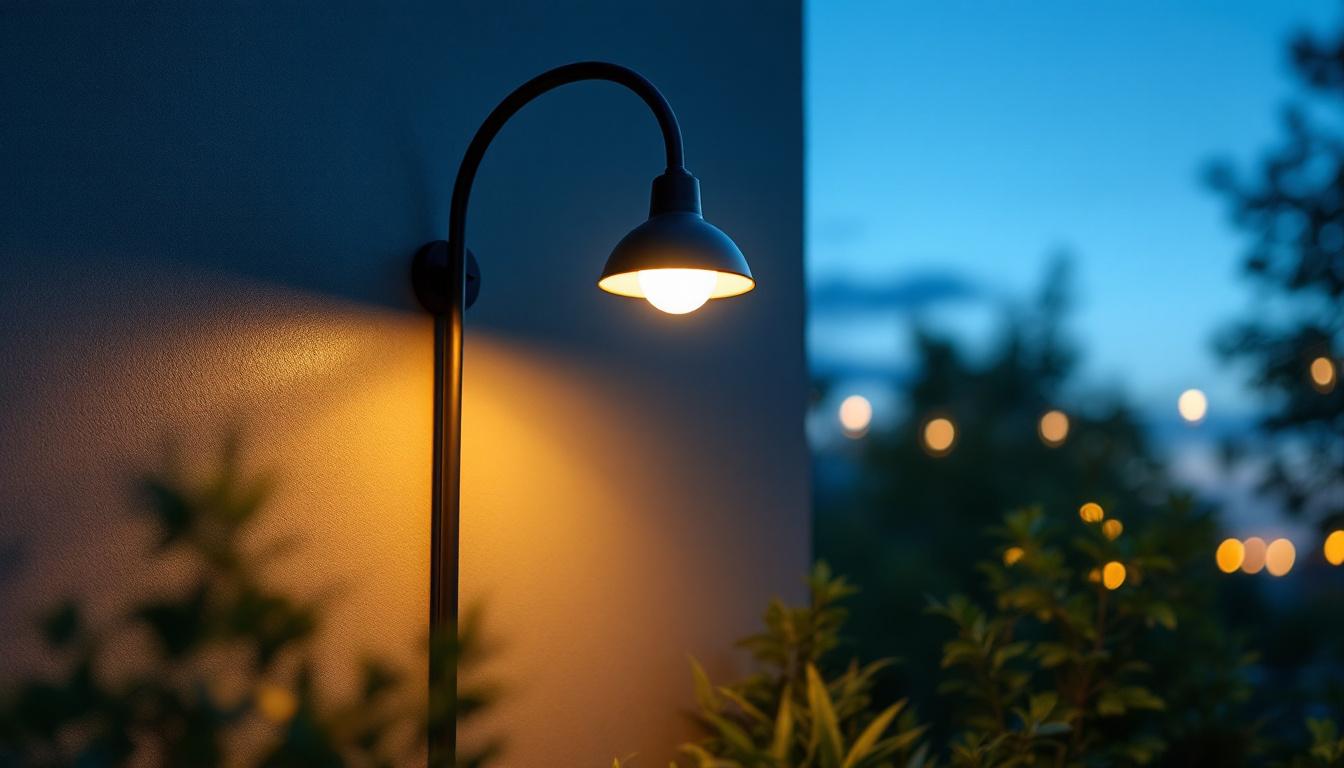
Lighting Motion Detector: Lighting Contractors’ Guide to Choosing the Right Ones
In the world of lighting installation, motion detectors have become an essential component for enhancing security, energy efficiency, and convenience. For lighting contractors, understanding the various types of motion detectors available and how to choose the right ones for specific projects is crucial. This guide will delve into the key factors that contractors should consider when selecting lighting motion detectors, ensuring that clients receive the best solutions tailored to their needs.
Motion detectors are devices that sense movement within a designated area and can trigger lighting systems accordingly. They come in various types, each with its unique technology and applications. Familiarity with these types will aid contractors in making informed decisions.
There are primarily three types of motion detectors: passive infrared (PIR), ultrasonic, and dual-technology detectors. Each type has its strengths and weaknesses, making them suitable for different environments and applications.
Passive infrared detectors are the most common type, utilizing infrared sensors to detect body heat. They are ideal for outdoor areas and spaces where energy efficiency is a priority. These detectors can often cover a wide range, making them perfect for large open spaces like parking lots or backyards. Additionally, their low power consumption makes them a favorite for solar-powered lighting systems, allowing for sustainable energy use while ensuring safety and security.
Ultrasonic detectors, on the other hand, emit sound waves and measure their reflection to detect movement. These are particularly effective in complex environments where obstacles may hinder infrared detection. For instance, in a cluttered warehouse or an office with numerous partitions, ultrasonic detectors can provide comprehensive coverage, ensuring that no movement goes unnoticed. Their ability to detect motion even in the presence of small animals or other non-human movement can also be advantageous in certain settings, such as in pet-friendly homes or facilities.
Dual-technology detectors combine both PIR and ultrasonic technologies, providing enhanced reliability and reducing false alarms. This makes them suitable for high-security areas where accuracy is paramount. By requiring both infrared and ultrasonic signals to trigger an alarm, these detectors minimize the chances of false triggers caused by environmental factors, such as moving trees or small animals. This dual approach not only enhances security but also contributes to the longevity of the system by reducing unnecessary wear and tear on the devices.
In addition to these primary types, there are also specialized motion detectors designed for specific applications, such as outdoor floodlight motion sensors that are built to withstand harsh weather conditions. These devices often feature rugged casings and advanced weatherproofing technologies, ensuring they remain functional in rain, snow, or extreme temperatures. Furthermore, smart motion detectors are becoming increasingly popular, integrating with home automation systems to provide users with real-time alerts and remote monitoring capabilities. This convergence of technology not only enhances security but also offers convenience, allowing homeowners to control their lighting and security systems from their smartphones or other devices.
Selecting the right motion detector involves evaluating several critical factors. These considerations will help contractors provide tailored solutions that meet client needs while ensuring optimal performance.
The environment in which the motion detector will be installed plays a significant role in the selection process. Outdoor detectors must withstand weather elements, while indoor detectors need to consider factors such as room layout and potential obstructions.
For outdoor installations, look for weatherproof models with a suitable IP rating. Indoor detectors may require adjustments based on the layout; for example, high ceilings may necessitate different mounting heights or types of detectors to ensure comprehensive coverage.
Another crucial factor is the detection range and sensitivity of the motion detector. Different models offer varying ranges, typically between 20 to 100 feet. Contractors must assess the specific area to determine the appropriate range required for effective coverage.
Sensitivity settings are also vital. Some detectors allow for adjustments to sensitivity levels, which can help minimize false alarms caused by pets or small movements. Understanding the client’s needs and the specific environment will guide the selection of a motion detector with the appropriate sensitivity features.
Motion detectors can be powered in various ways, including battery-operated, hardwired, or solar-powered options. Each power source has its advantages and limitations, making it essential to consider the installation location and client preferences.
Battery-operated detectors offer flexibility and ease of installation, while hardwired options provide more reliability and eliminate the need for battery replacements. Solar-powered detectors are an excellent choice for remote locations, but their efficiency depends on adequate sunlight exposure. Additionally, connectivity options such as smart home integration can enhance functionality, allowing for remote monitoring and control.
Incorporating motion detectors into lighting systems offers numerous advantages, making them a valuable addition for contractors to recommend to clients.
One of the most significant benefits of motion detectors is their ability to enhance energy efficiency. By ensuring that lights are only activated when needed, clients can significantly reduce energy consumption and lower utility bills. This feature is particularly appealing to environmentally conscious clients looking to minimize their carbon footprint.
Moreover, many modern motion detectors come equipped with adjustable timers and dimming features, allowing for even greater control over energy usage. This level of customization can be a selling point for contractors when discussing options with clients.
Motion detectors play a crucial role in improving security for residential and commercial properties. By automatically illuminating areas when movement is detected, they can deter potential intruders and provide peace of mind for property owners.
For commercial properties, integrating motion detectors with surveillance systems can enhance security measures further. Lights can be programmed to activate in response to motion, providing visibility and alerting security personnel to potential threats.
In addition to energy savings and security, motion detectors offer convenience for users. For instance, they can automatically light pathways, driveways, or entryways, making it easier for individuals to navigate spaces at night.
This feature is especially beneficial for elderly clients or those with mobility challenges, as it reduces the risk of accidents in poorly lit areas. By highlighting these benefits, contractors can position motion detectors as a practical solution for enhancing overall accessibility.
For PIR detectors, positioning them at a height of 6 to 8 feet is ideal for detecting human movement. Ultrasonic detectors may require different placements due to their reliance on sound waves, so understanding the technology is essential for optimal performance.
After installation, thorough testing and calibration of motion detectors are crucial. This step ensures that the detectors are functioning correctly and that sensitivity settings are appropriately adjusted to minimize false alarms.
Contractors should simulate movement in the detection area to verify that the lights activate as intended. Additionally, adjusting the sensitivity settings based on the specific environment can help achieve the best results.
With the benefits of energy efficiency, enhanced security, and convenience, motion detectors are an invaluable addition to any lighting system. By addressing common challenges and educating clients, contractors can ensure successful installations that meet and exceed expectations.
Ultimately, staying informed about the latest technologies and trends in motion detection will empower contractors to make the best choices for their clients, leading to satisfied customers and successful projects.
Ready to elevate your lighting installations with the most efficient, secure, and convenient motion detectors on the market? Look no further than LumenWholesale, where we provide contractors with the highest quality, spec-grade lighting products at unbeatable wholesale prices. Say goodbye to inflated markups and hello to a vast selection of reliable lighting solutions that meet the strictest industry standards. Plus, with free shipping on bulk orders, you can stock up on premium lighting without any hidden fees. Make your next project shine and experience the perfect blend of quality, affordability, and convenience. Visit LumenWholesale today for Wholesale Lighting at the Best Value.

Discover how incorporating 24 fluorescent light fixtures into your projects can give lighting contractors a competitive edge.

Discover why lighting contractors should prioritize pot lights in their projects.

Discover essential tips and common pitfalls to avoid when installing gooseneck lights outdoors.

Discover expert tips and step-by-step guidance on replacing fluorescent lights with ease.